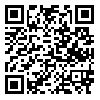Volume 6, Issue 3 (Occupational Medicine Quarterly Journal 2014)
tkj 2014, 6(3): 60-69 |
Back to browse issues page
Download citation:
BibTeX | RIS | EndNote | Medlars | ProCite | Reference Manager | RefWorks
Send citation to:



BibTeX | RIS | EndNote | Medlars | ProCite | Reference Manager | RefWorks
Send citation to:
Zokaei M, Flahati M, Jalilian H, Faghih M, Normohammadi M, Amiry S. Assessment of musculoskeletal disorders risk using MFA method and the survey of correlation between its results and results of RULA method. tkj 2014; 6 (3) :60-69
URL: http://tkj.ssu.ac.ir/article-1-328-en.html
URL: http://tkj.ssu.ac.ir/article-1-328-en.html
tehran university of medical sccience , mzokaei2011@gmail.com
Abstract: (7419 Views)
Background: One of the most main jobs in the automotive industries is assembly that its activities include hand motions, navigation of pieces and using controlled forces for joining of them together. Awkward posture is one of the most important risk factors in incidence of musculoskeletal disorders. There are different methods to assess those factors. This study was conducted to illustrate the correlation between the results of MFA method and RULA in the assessment of musculoskeletal disorders risk.
Methods: In this cross-sectional study 37 jobs were selected as a sample by using of Cochran formula. In this study, 80 postures were assessed by using of two mentioned methods to determine the musculoskeletal risk level.
Results: The results of MFA method indicated that 17.5%, 11.3% and 7.5% of jobs in shoulders, low back, wrist and fingers were sequentially in “very high” level of modified actions preference. On the other hand, the results of RULA assessment pointed out that 46.3% of jobs were in level 3 of modified actions and 38.8 of them were in level 3 of those actions. Analyzing of data by using of Spearman test displayed that there is significant relationship between RULA scores of shoulders, body and neck with the level of modified action in MFA method (P-value≤0.05) and sequentially, the correlation coefficients were 0.782, 0.787 and 0.8.
Conclusion: In general view, there are many similarities between two methods in both the way of study and the final assessment however, one of the main differences of them is that the results of MFA method are more reliable when all parts of body involve in physical activities. In addition, in MFA method, the details of body’s limbs are assessed more than RULA method.
Type of Study: Research |
Subject:
Ergonomics
Received: 2013/07/6 | Accepted: 2014/03/3 | Published: 2014/11/9
Received: 2013/07/6 | Accepted: 2014/03/3 | Published: 2014/11/9
Send email to the article author
| Rights and permissions | |
 |
This work is licensed under a Creative Commons Attribution-NonCommercial 4.0 International License. |





